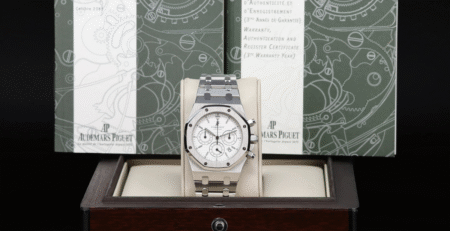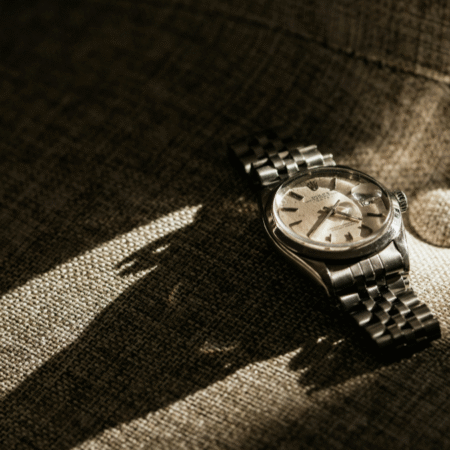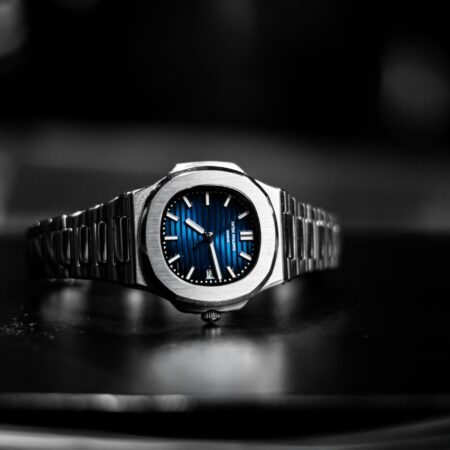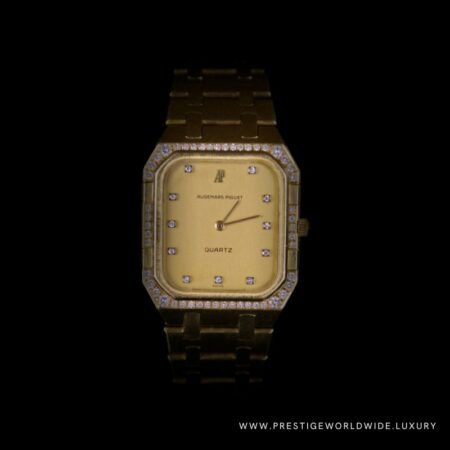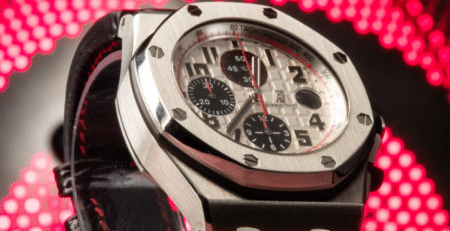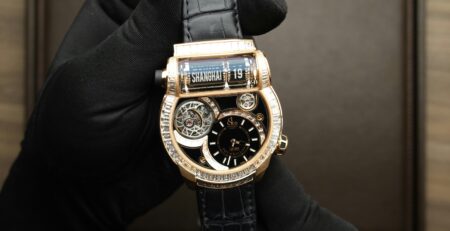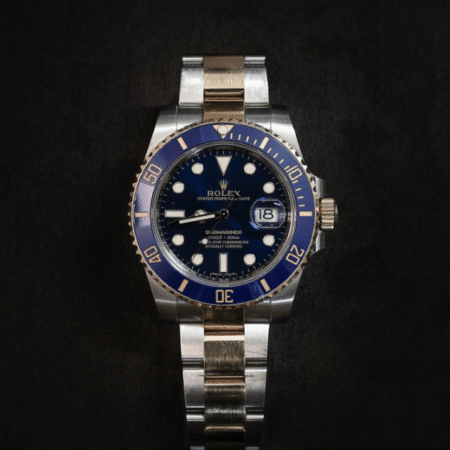What Are Super Clone Watches? Understanding the Evolution of Fake Luxury Timepiece.
The counterfeiting of timepieces traces back to the early days of portable horology. When John Harrison’s marine chronometer solved the longitude problem in the 18th century, inferior copies appeared within months, endangering navigation and lives. The Swiss response was swift and decisive: the establishment of hallmarking systems, guild certifications, and the foundations of what would become the Swiss Made designation.
For nearly two centuries, these protections sufficed. Counterfeiters lacked access to specialized machinery, trained craftsmen, and the subtle knowledge passed down through generations of watchmakers. A fake Patek Philippe from the 1960s might fool a casual observer, but any competent watchmaker could identify it within seconds by examining the movement architecture, finishing quality, or even the particular shade of blue used for screws.
This comfortable distinction began eroding in the 1990s. The democratization of manufacturing technology – CNC machines, CAD software, precision measurement tools – coincided with the opening of global markets. Suddenly, the tools that enabled the Swiss industry’s renaissance were available to anyone with sufficient capital and ambition.
Today, we witness the full flowering of this technological convergence. Modern counterfeit operations represent a $1 billion annual industry producing 40 million timepieces – double the output of Switzerland itself. More troubling still, approximately 10% of these pieces achieve what we must reluctantly acknowledge as near-authentic quality.
How Do Counterfeiters Make Fake Watches? Understanding Super Clone Manufacturing.
Why Are Fake Watches Getting So Good? The Technology Behind Super Clones
To appreciate why current counterfeits pose such challenges, we must examine their manufacturing processes with the same rigor we apply to legitimate horology. Consider the tolerances achieved in movement production. When Rolex manufactures a caliber 3235, they maintain dimensional accuracy within ±0.002mm for critical components. Contemporary counterfeit watch factories, utilizing identical Kern and Tornos machines, achieve ±0.001mm tolerances on their “super clone” movements.
How Counterfeiters Copy Swiss Watch Movements
How is this possible? The answer lies partly in expired patents. The fundamental architecture of the ETA 2824, for instance, entered public domain years ago.
Chinese replica watch manufacturers legally reproduce these designs, often improving efficiency through modern manufacturing techniques unavailable when the original patents were filed. They source legitimate Incabloc shock protection systems, Nivarox hairsprings, and even authentic jewels from the same suppliers serving Swiss manufactures.
The materials science employed deserves particular attention. Creating a convincing ceramic bezel requires more than matching the appearance – it must feel right, wear correctly, and respond to light identically to the original. Counterfeiters now use hot isostatic pressing at 2000°C and 200 MPa pressure, achieving ceramic density within 0.1% of genuine Rolex Cerachrom. They analyze authentic pieces using mass spectrometry to determine exact aluminum oxide ratios and rare earth element additions that create specific colors.
Perhaps most impressively – or disturbingly – counterfeiters have mastered synthetic sapphire crystal production. Using the Czochralski process (the same method employed by genuine manufacturers), they pull boules of aluminum oxide from molten crucibles, achieving identical refractive indices and hardness. Multi-layer anti-reflective coatings are applied through magnetron sputtering, matching the specific wavelength interference patterns of authentic crystals.
How to Authenticate a Luxury Watch: Modern Verification Methods.
Understanding these manufacturing capabilities illuminates why authentication has evolved from casual inspection to scientific analysis. Modern authentication combines multiple disciplines: materials science, statistical analysis, historical scholarship, and pattern recognition.
Essential Authentication Points to Spot a Fake Rolex
- Crown Etching: Genuine Rolex watches feature a micro-etched crown at 6 o’clock on the crystal (post-2002 models)
- Serial Number Quality: Laser-etched serials should have diamond-like reflective quality with perfectly sharp edges
- Movement Sound: Authentic Rolex movements produce 8 ticks per second (28,800 bph), creating a smooth sweep
- Weight Distribution: Genuine pieces feel substantial with balanced weight due to quality materials
- Cyclops Magnification: The date magnifier should enlarge exactly 2.5x with perfect clarity
A professional authentication process for a suspect Patek Philippe 5711.
First, comes macro examination – systematic observation under controlled lighting.
Authentic Patek Philippe dials undergo a twelve-step production process including multiple galvanic treatments, pad printing with specific ink formulations, and hand-applied indices. Each step leaves microscopic signatures invisible to the naked eye but revealed under 60x magnification.
The sunburst pattern on a genuine 5711 dial results from brushing with specific abrasive compounds at precise angles. Counterfeiters approximate this visually, but microscopic analysis reveals telltale differences in scratch depth consistency and radial alignment. The applied indices should show perfect galvanic plating with no visible substrate at edges – a detail many super clones miss.
Movement analysis goes beyond visual inspection. Using acoustic analysis, we can identify the oscillation frequency of the balance wheel within 0.1 Hz. Genuine Patek Philippe movements exhibit specific harmonic signatures resulting from their free-sprung balance design and Gyromax regulation. Counterfeit movements, even those keeping excellent time, produce detectably different acoustic profiles.
Chemical analysis provides another authentication layer. X-ray fluorescence spectroscopy non-destructively determines alloy composition throughout the watch. Genuine manufacturers use specific steel formulations – Rolex’s 904L, Patek’s proprietary alloys – that counterfeiters approximate but rarely match exactly. The presence or absence of trace elements like molybdenum or nitrogen becomes a chemical fingerprint.
The Blockchain Revolution in Provenance
While physical authentication addresses current counterfeits, blockchain technology promises to revolutionize future provenance tracking. To understand its significance, consider how we currently establish provenance: paper certificates, service records, receipts — all easily forged or lost.
Blockchain creates an immutable digital ledger where each transaction becomes permanently recorded and cryptographically verified. When Vacheron Constantin creates a new watch, they generate a unique digital certificate containing manufacture date, serial numbers, component specifications, and even microscopic photography of unique surface characteristics. This certificate, stored on a distributed blockchain, cannot be altered or counterfeited.
Each subsequent transaction – sale, service, modification – adds a new block to the chain. A pre-owned buyer can trace complete ownership history, verify every service was performed by authorized centers, and confirm no components were altered. The watch essentially carries its entire history in an unforgeable digital format.
Current implementations use Near Field Communication (NFC) chips embedded within watches. These chips, smaller than a grain of rice, contain cryptographic keys linking physical watches to their blockchain records. A smartphone app can instantly verify authenticity and complete history – imagine the confidence this provides for collectors considering significant purchases.
A Sobering Reality of Financial and Legal Implications.
The romantic notion of “getting a deal” on luxury watches must be tempered with understanding the catastrophic consequences of purchasing counterfeits. When a watch is identified as fake, its value doesn’t diminish – it vanishes entirely. No legitimate dealer, auction house, or collector will touch it. The $30,000 you believed was shrewd negotiation becomes an immediate, total loss.
Insurance ramifications extend beyond simple claim denial. Major insurers share fraud databases, and filing a claim on a counterfeit watch – even unknowingly purchased – triggers systematic consequences. Your policy faces cancellation, future applications require disclosure of the incident, and premiums increase dramatically if coverage is obtainable at all. Some collectors have found themselves effectively uninsurable after counterfeit-related claims.
Legal exposure varies by jurisdiction but remains universally serious. In the United States, federal law makes trafficking in counterfeit goods a crime punishable by up to 10 years imprisonment and $2 million in fines. While authorities rarely prosecute individual buyers, the law makes no distinction between knowing and unknowing purchase. Customs agents can and do seize counterfeit watches regardless of owner intent.
European laws prove even stricter. France’s Code de la Propriété Intellectuelle provides for €300,000 fines and three years imprisonment for possessing counterfeit goods. Italian authorities regularly arrest tourists carrying fake luxury items, with fines reaching €10,000. The principle across jurisdictions remains consistent: ignorance provides no defense.
Building a Defensive Collection Strategy
Given these realities, how should thoughtful collectors approach acquisition? The answer lies in developing systematic protocols that become second nature. Think of it as preventive medicine for your collection – small investments in caution that prevent catastrophic losses.
Source verification forms your first line of defense. For contemporary pieces, authorized dealers provide unquestionable authenticity through direct manufacturer relationships. Yes, you’ll pay full retail, but consider that premium as authenticity insurance. The savings from grey market dealers evaporate instantly if questions arise about legitimacy.
For vintage and pre-owned pieces, relationship building becomes crucial. Establish connections with dealers who’ve demonstrated expertise in specific brands or eras. A dealer specializing in vintage Omega who’s handled hundreds of Speedmasters possesses pattern recognition abilities no authentication service can match. Their reputation depends on accuracy – one bad watch can destroy decades of credibility.
Documentation tells stories beyond simple paperwork. Original certificates show printing techniques, paper quality, and security features specific to their era. Rolex papers from the 1970s used specific watermarks and typing patterns. Service receipts create provenance chains – a watch serviced by Patek Philippe Geneva in 1995, 2005, and 2015 carries irrefutable authenticity evidence.
Professional authentication should be viewed as essential due diligence, not optional insurance.
Budget 1-2% of purchase price for authentication services. For significant acquisitions exceeding $25,000, consider multiple independent authentications. The redundancy might seem excessive until you consider the alternative – discovering your prized acquisition is worthless.
The Future Landscape
Looking forward, several trends will reshape the authentication landscape. Artificial intelligence systems already achieve remarkable accuracy identifying counterfeits through image analysis. As these systems ingest millions of reference images, their pattern recognition capabilities will surpass human expertise for initial screening. Imagine photographing a watch with your smartphone and receiving instant probability assessments of authenticity.
Manufacturers will implement increasingly sophisticated security features. Nano-engraving creates identifiers visible only through electron microscopy. DNA marking embeds synthetic genetic sequences unique to each watch. Quantum dots – semiconductor nanocrystals – provide unclonable optical signatures. These technologies exist today in laboratories and will reach production within five years.
The collector community itself provides powerful counterfeit resistance. Online forums aggregate collective knowledge, quickly identifying new fake variations. Blockchain-verified transaction histories create trust networks where proven authentic watches carry premium values. Social pressure against counterfeits increases as awareness spreads about their connection to organized crime and labor exploitation.



